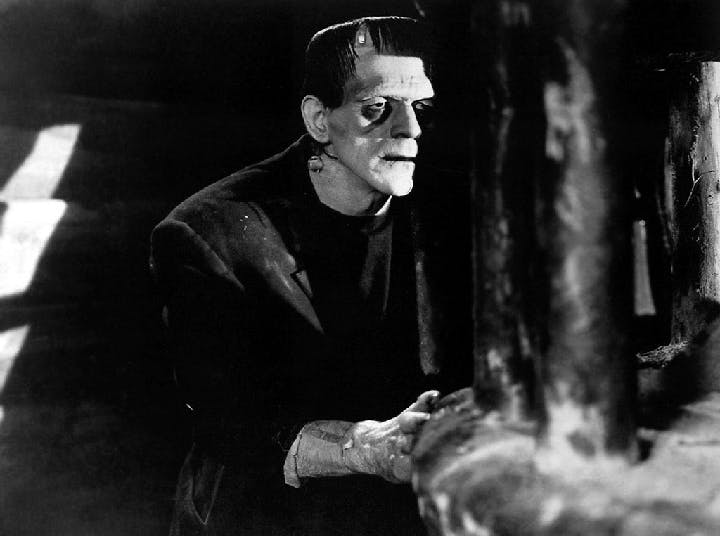Winter 2008
How “Frankenstein” Came to Life
– The Wilson Quarterly
How could 18-year-old Mary Wollstonecraft Shelley have concocted a horror tale for the ages? Many now think she had a very good editor: her husband.
You’ve heard the argument before: How could a Stratford grain hoarder and a rube who didn’t own books possibly be the real Shakespeare? The answer, according to some, is that Shakespeare is merely the nom de plume of a writer with a proper pedigree: Edward de Vere, the Earl of Oxford, schooled at Cambridge at age eight. Most scholars disagree.
Now the authorship question is being applied with a misogynistic twist to Mary Wollstonecraft Shelley (1797–1851). How could an 18-year-old girl possibly have written the soaring prose of Frankenstein? How could she have conceived its homoerotic themes? How could she have conjured a plot so deep and enduring? How could she have recognized the danger inherent in creating life, of usurping both God’s and women’s role? The answer, coming from a new klatch of critics, is that she didn’t. They say the author of the most famous horror story of all time was a man, her husband: Percy Bysshe Shelley.
The dispute over the authorship of Frankenstein might never have emerged were it not for the extraordinary revival of interest in the novel in academic and popular circles that has resulted from the sometimes-frightening advances in genetic engineering and other fields. Though “rarely considered literature for a century and a half,” writes Jonathan Gross, an English professor at DePaul University, Frankenstein has become the subject matter of entire college courses. The book is available in no fewer than 53 editions.
The story goes that Frankenstein appeared to Mary Shelley in a nightmare after Lord Byron issued a challenge to write a horror story during a summer holiday in Switzerland. When the book was published anonymously in 1818, Sir Walter Scott gave it a favorable review and treated it as the work of Percy Shelley. Mary Shelley wrote to disabuse him of“continuing in the mistake of supposing Mr. Shelley guilty of a juvenile attempt of mine.”
The “Percy-as-author” school says that Mary could not be the creator because her subsequent books, several of them written after her husband drowned, are not as well written. She brought on suspicion by destroying some documents from the period during which Frankenstein was written. But the principal charge against her is that no teenage girl could possibly have written such a masterpiece.
Mary Shelley, however, was no ordinary 18-year-old. Daughter of anarchist philosopher William Godwin and feminist Mary Wollstonecraft (who died from complications of childbirth after her daughter was born), Mary Shelley read Latin, French, and Italian and was tutored in science, history, and literature. Those destroyed documents? They were writings that she feared might anger her hostile father-in-law and damage her son’s chances of inheriting his estate.
Shelley specialists have examined the penmanship of Frankenstein. They say that Percy Shelley changed spelling, grammar, and awkward phrases, but the book remains Mary Shelley’s creation. Her husband’s work was little more than the contributions of an editor. “Perhaps those of a very good editor,” Gross says.
* * *
The Source: “Who Wrote Frankenstein?” by Jonathan Gross, in The Common Review, Fall 2007.
Cover photo courtesy of Flickr/Insomnia Cured Here
